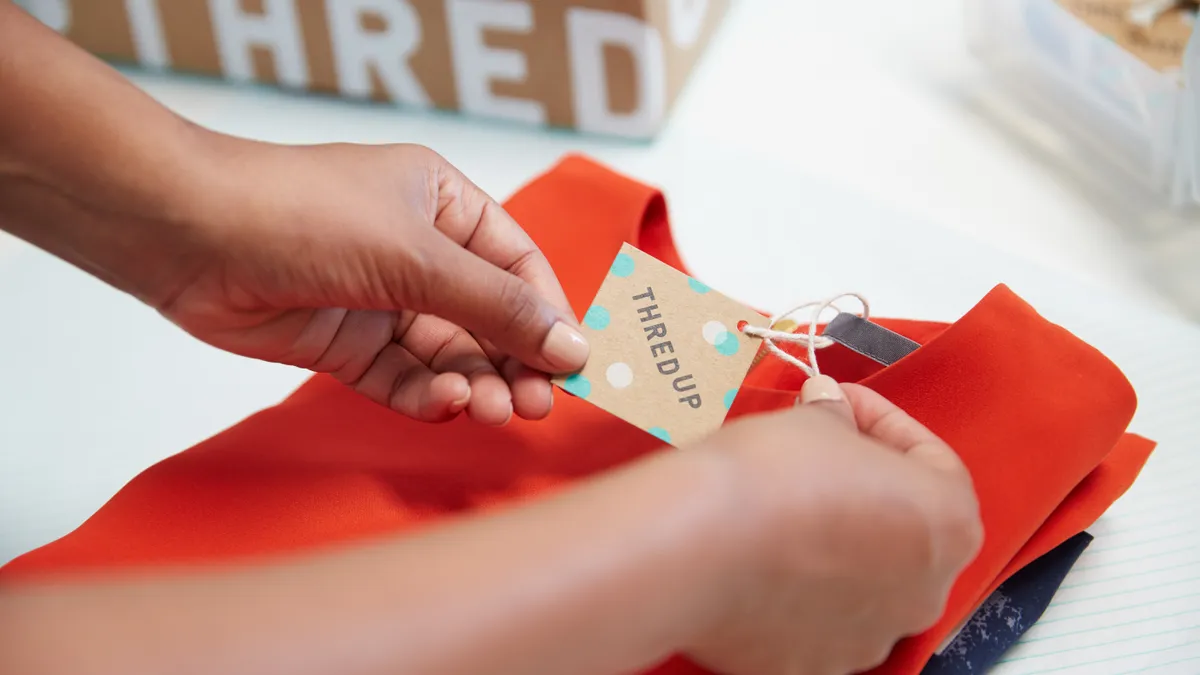Dive Brief:
- According to a new report from ThredUp, 79% of consumers plan to decrease their apparel spending in the next 12 months, and four out of five say that they already have or are interested in shopping secondhand to save money.
- In 2019, about 40% of Gen Z and 30% of millennial respondents said they bought used clothing, footwear or accessories, up from about 26% and 21% in 2016, respectively. The report also found that 90% of Gen Z consumers have or are interested in purchasing used goods when they're low on cash, and 80% said there's no stigma in doing so.
- Over the next five years, 52% of consumers expect to spend more money on secondhand fashion, according to ThredUp's research. The report projects that the secondhand market will grow to 17% of the overall apparel market share in 2029, second only to the off-price sector.
Dive Insight:
ThredUp projects that a rise in used clothing purchases will coincide with a further decline in fast fashion market share. Its report predicts that by 2029 the fast fashion market will reach $43 billion, compared to $36 billion for the traditional thrift and donation market, and $44 billion for the resale market.
This year's report predicts that the secondhand market will hit $64 billion in 2024, on top of 2019's projections for the market to reach $51 billion by 2023.
ThredUp's research suggests that recent consumer spending via its own platform has been sparked in part by the COVID-19 pandemic. In addition to consumers opening up to secondhand goods while low on funds, the report showed 20% growth for ThredUp between mid-March and May 31.
Before and during the coronavirus pandemic, ThredUp has been committed to a partnership strategy. The secondhand business has partnered with a range of retailers, including Walmart, Macy's, Gap and Madewell. The company's latest research sheds some light on why retailers are interested in these collaborations — its report found that 82% of retail executives are interested in resale because of higher foot traffic, 66% think it's good for the environment and 58% want to attract younger shoppers.














